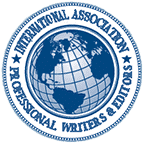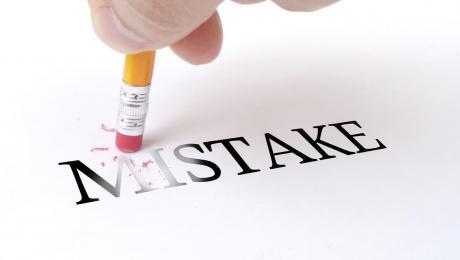Do Your Business Writing Skills Need Improvement?
There is value in writing well. Even if you are a multi-tasking, frequently-under-stress executive, making time for better business writing is worth it. It is not frivolous or tiresome; indeed, communicating effectively will benefit your career. See below for some tips to get you started.
Think First and Write Afterwards
Your communications need to be engaging and plain-spoken, so that your style of composition does not burden busy people. Effective writing is a cultivated skill. Do not write prematurely; think first about what you want to communicate. People who think as they write do not convey their thoughts clearly. Their communications lack structure. Be thoughtful, and avoid haste. Consider what your reader (or readers) should think or know after receiving what you sent.
Do Not Bury Your Point
Present the main idea first. Impactful business writing has clarity. Summarize your point in the beginning regardless of whether you write a memo, proposal, or an email. It will help you better craft your argument/communication. You will save your audience’s time, and your writing will stand out by being direct.
Avoid Padding Your Message
Emails should be brief, clear, and specific. The beginning sentences should let the reader know about the rest of the message. You will capture the attention of busy professionals by giving them a brief summary of the contents in the opening of your message.
Each word should matter. Be concise. Get rid of filler words and phrases. Grandiose language reflects verbosity, not intelligence. Convey the objective clearly. Use stronger action verbs, and remove prepositions for more direct language.
Avoid Acronyms and Jargon, Where Possible
Industry-specific jargon and acronyms may be necessary sometimes, but when used frequently they indicate laziness and bore the reader.
Write with a Natural Tone
Writing that is either stuffy or overly casual hits the wrong tone. Be natural. Write the content quickly, and edit it later.
Review and Edit the Text
Go over what you write. Read your writing objectively, and remove unnecessary words and content. Readers pay less attention to verbose content. When appropriate, ask for feedback from colleagues, especially if you are writing a proposal, report, or an important memo. Other viewpoints will help you improve.
If your business writing is not as clear as it should be, then focus on how to improve it. Put yourself in your recipient’s place, and consider whether what they will receive is what you wanted to convey. If you have the time, read some books about improving business writing.
- Published in Writing & Editing Jobs, Writing & Editing Resources
7 Common Mistakes Made by Novice Novelists
Professional writers of all stripes will agree that writing is both easy and hard. For novelists, the challenge exceeds composing well-written content. Agents reject flawed work. It is better to create a less mistake-riddled work given the high rate of rejection by agents.
Novice novelists make a number of common mistakes. Weed out these weaknesses while drafting the novel. Keep in mind the following common mistakes made by inexperienced writers.
1. An Undistinguished Manuscript
To get out of the slush pile, the novel needs to have a concept, an angle, or a pitch that is outstanding. Think big. Develop an aspect of the novel that makes it fresh, even if you are writing for a genre in which readers expect to see certain elements in their books. If your manuscript is good, but not good enough, do not be surprised by a rejection letter.
2. Extreme or Inefficient Language or Cliché-Riddled Writing
Strong language is useful, when used with discretion. Overuse is off-putting. Make every sentence economical; make your words count. Excessive verbiage is dead weight that hampers the reader you want to impress. Descriptive language or content that is too familiar is a cliché. Keep that in mind, and you will see that agents and editors will appreciate your efforts.
3. Absent or Bland Descriptions
Readers enjoy being transported into a different world. Provide a context and setting that will engage readers.
4. Pretty Prose, Lack of Clarity, or a Literary Writing Fail
Showy language overwhelms content because the disruptive power of pretty prose impedes the flow of the narrative. Optimally, prose clearly and economically conveys meaning. Be aware that sloppy prose may signal sloppy thinking. If you aspire to write literary fiction, competence is insufficient. Literary fiction must be well written.
5. Pointless Detail and/or Distracting Research
Avoid unnecessary details to keep the reader interested. Even if you have done extensive research about the background setting of your fiction, do not smother the narrative with facts. This also applies to information about location and scenery. You are writing fiction, not a travelogue.
6. Plots, Character, and Conflict Weaknesses
Is the plot discernible? Your manuscript should not be a sequence of events affecting your characters or have bland, non-relatable characters. Add depth to your characters with insights into their inner lives or background stories. The backstory provides more information about the character. It can even just hint at the inner motivations of the character.
7. Dialogue and Pacing Weaknesses
Believable dialogue can be challenging for first-time novelists. Read each character’s dialogue to catch inconsistencies. Stick to the same points of view in a scene. Handle the transition from one character to the next carefully in a scene. Uneven pacing makes the narrative disjointed and could turn off readers.
Writing a novel is a major undertaking. The next challenge is to get past the slush pile. Avoid common mistakes to create an outstanding first novel that launches your writing career.
- Published in Writing & Editing Resources
Establishing a Routine for Productive Writing
Establishing a routine is an essential tool for most writers. Routines are invaluable for writers because they provide structure and allow them to focus on writing. The difference between unrealized potential and being a published author is the commitment to make it happen. Establishing a daily routine is a part of the process.
Learning how to establish a routine that works is a personal choice and depends on the person’s daily activities. If you are a busy person, establishing a routine will make you consistently productive.
Choose a Comfortable Workspace
Writers need an organized and inspirational workspace that is as distraction-free as possible. Your workspace can affect how often and well you write. The ideal workspace will help you to be a productive writer.
Establish a Writing Time and Its Duration
Productive writers often make writing a part of their daily routine. A writer may elect to write for the same amount of time each day or establish how many words or pages get written daily. Sometimes it is better to create a space during the day, either before the daily grind begins or at nighttime before bed.
Select a Playlist for Writing Sessions
Some writers like using playlists. Music can affect the written word, inspire writers to create, and help set the mood. You can stick to the same playlist or change it up. What you choose should make you feel inspired and relaxed.
Keep a Notebook or Virtual Tool for Notes on the Go
Writers get inspiration at unscheduled moments. Even if you have an established routine, a notebook for jotting down ideas is a useful tool. A notebook helps writers make productive use of their established daily writing periods.
If you do not want to carry a notebook and writing utensil around, consider using an online tool like OneNote, Evernote, or Pocket to collect your ideas. You can write when you get the inspiration and not just during your designated daily writing period. When you are in the zone, you should keep going while it lasts.
Keep Material for Reading Inspiration
Keeping other writers’ work handy provides a ready source for inspiration when you need it.
Repetition of a set routine can mesmerize the writer into an absorbed state of mind. Writers who do not have other distractions can get in the writing mode by following a daily routine like writing at a certain time, doing some form of exercise before or after the writing period, or doing something that gets the juices going like listening to music or reading.
Nevertheless, do not become a slave to a routine that does not serve you. The purpose of the routine is to provide you with the space to write productively. If you cannot establish a routine, write whenever you can.
- Published in Writing & Editing Resources
Writing a Captivating Query Letter
A query letter is a one-page document sent by a writer to his or her literary agent. Its primary purpose is to lure the agent’s interest in the manuscript. Since many writers are engaged in the same goal, a successful query letter makes for an outstanding pitch.
Each query does not have much time, or space, to capture the interest of the literary agent. Experienced agents get thousands of queries every year. This is why novice writers sweat over the challenge of writing a captivating query letter.
Creating a List of Prospective Agents
There are several resources that help writers locate agents that specialize in their genre. These include databases like the publishersmarketplace.com, literarymarketplace.com, the Association of Author Representatives, agentyuery.com, querytracker.net, and writersmarket.com. After finding potential agents, writers need to visit the agents’ websites to obtain submission guidelines, find out what types of books they are looking for; and whether they are still accepting submissions.
Following Submission Guidelines
Submission guidelines specify the acceptable method of submission, as well as what should be included in the query letter’s contents and/or attachments. Some elements do not change even when the contents vary according to the agent’s specifications, the work being pitched by the writer, and its genre.
Printed/Email Formats and Content
If the agent wants the material submitted by mail, then the letter should have the writer’s address, right justified, at the top of the page followed by the left justified agent’s name and address. If the letter is being submitted by email, the subject line should indicate it is a query and the signature should have the writer’s name, address and other contact information.
The agent should be addressed courteously; and, the main portion of a posted letter should not exceed five or 6 paragraphs. Emailed queries should not exceed 300 words because agents read and discard emails quickly.
The first paragraph should capture the agent’s interest. This is the paragraph where connection with the agent maybe personalized by for example mentioning authors represented by the agent, or any meeting with the agent, or knowing someone who knows the agent. It can include the word count of the book, its genre and title.
The following paragraphs should capture the agent’s interest by giving a vivid sense of the book. If query is about a nonfiction work, the writer should explain why the writer is qualified to write the book. If the book is a novel, then following agents on social media may provide useful information about whether the agent is the right fit for the book being pitched. Only requested attachments should be provided. The signature can include links to a personal website or blog.
Bottom line: agents want projects that publishers will accept. If you want to feel comfortable about your task, check online for examples that have worked. You can also improve the odds of being accepted by sending queries to many agents.
- Published in Writing & Editing Resources
4 Actionable Tips for Bloggers
Bloggers have to engage and maintain their readers’ attention. A study has found that only 16% of visitors of a website read every word of its content. Evidence from consumer reports, polls, and experiments reveals that computer screens make the content more difficult to read than it would be on printed paper.
A blog writer must craft the content to hold the reader’s attention. It is harder for people to read content that winds slowly to its conclusion because reading online content subtly impairs reading comprehension even for higher-literacy readers. Perhaps this is also why online material is less conducive to learning than is content printed on paper.
The following tips will help you to hook your readers and hold their attention:
Write for the Reader You Want to Engage
Are you writing for an educated audience or a wider consumer audience? This makes a difference because the online behavior of higher-literacy readers is unlike that of lower-literacy readers. Lower-literacy readers are not text scanners; while higher-literacy readers scan the text.
Lower-literacy readers read each word, so multi-syllabic words should be avoided to speed the process for them. If they are your intended audience, do not present the material in a style that is too complicated for lower-literacy readers. Dense text loses the attention of such readers as they skip over it to save time and effort.
Grab the Reader’s Attention with the First Sentence
The first sentence is critical because it engages the reader while providing some idea of the subject matter at the same time. Consider beginning with a question, a statistic, a quote or use another way to hook the reader.
Do Not Waste Words and Avoid Longwinded Sentences
Use words that most people can understand. Because of the limited attention span of most online readers, a blogger has to focus on getting the point across as quickly as possible. The content needs to be crafted so that every part of the content—from words to punctuation style and arrangement—adds something to the product. Read the content aloud to gauge the pace of the text.
Make Your Text Easily Scannable
Scanning is a technique used by readers to make the content less tiring to read.
Research how formatting, lists, headings and sub-headings, and other techniques are used to make the text more scannable. Focus on making it easier for readers to remember the content.
Readers reward bloggers who write unique, engaging, and informative content. Keep in mind that according to the U.S. Department of Education 43% of the population has a low literacy level. Present your content in a way that engages both higher-literacy and lower-literacy readers, if you are writing for a general audience.
- Published in Writing & Editing Resources
Finding Freelance Work Through Online Resources
Everyone thinks they want to be a freelance writer. You make your own hours, you set your own rates—what could be better? Getting paid, that’s what. Finding paying work online is like tracking down that pesky cricket in your bathroom at four in the morning. You know it’s there, but you just can’t find it. And just like catching that cricket, finding freelance writing work takes some skill and out-of-the-box thinking. Here are some great places to start your search.
Craigslist is Your Friend
Yes, you can find a lot of writing work on Craigslist! You just have to know how. If you only look in your particular city, there might be three or four listings a week (if you’re lucky), but there is a better way. Google’s advanced search option lets you rummage through Craigslist posts all over the country (and world) and find remote work everywhere.
Facebook: Not Just for Photos Anymore
Facebook can be used for a lot more than just gossiping about media celebrities and sharing pictures of cats. There are pages and groups galore, and a few moments’ searching will uncover dozens of writers’ groups, pages, sites, and blogs. Facebook is a great place to share tips with other writers too.
LinkedIn Will Keep you LinkedUp
For more professional writers—or those who want to be pros—the professional networking site LinkedIn is a great place to be seen and noticed. Businesses, companies, and sole proprietors prowl the forums on LinkedIn, looking for people who are bright, savvy, and able to write coherent sentences. Technical or scholarly writers do well on this site for pros.
Meetup Makes Meeting Up Merry
Not all writing can be done remotely. Sometimes you have to get out and hustle. Where to start? That amazing site Meetup finds networking groups, writing critique groups, business organizations, and social clubs—all great places to seek work. A talented writer with a little moxie can make connections, and more importantly, get assignments at these get-togethers.
The Art of Bidding Wars
Bid sites abound online these days, and they are good places for writers to hone their other skills—negotiation and price setting. Thumbtack, Fiverr, and Freelancer.com are all sites where, for a small fee, you can post your profile and then bid on projects others post. Bidding sites are not necessarily places to earn a living, but they are great for developing a portfolio, earning a little pocket money, and most importantly, getting your name and reputation out among people.
Freelancing is not a job to be taken lightly. There is money in it, but like that midnight cricket, it is elusive and takes patience to find. But the rewards of working for yourself are great and worth all that time spent hunting around cold dark tiles in the middle of the night.
- Published in Writing & Editing Resources
Drafting a Business Plan
A business plan is a written description of a company’s present and future. It lays out what the business is, what its chief executive plans to do and how he/she plans to accomplish it. The strategic document presents a roadmap for success. It projects three to five years ahead and outlines the intended path for revenue growth in that period.
The business plan reveals the current position and capacity of the business, and then how it plans to expand its revenue base, capacity, and associated factors between the present and the projected future.
How to Make the Business Stand Out in the Business Plan
What makes the business unique? Presenting this effectively will help you differentiate your business from its competitors and show that you understand the value of the business to the market or markets it is targeting.
Essential Elements of the Business Plan
The Executive Summary
Readers see the executive summary first, and it summarizes the business plan. In one or two pages, you emphasize the positive and play down the negative (when pitching to investors nor creditors). It can include vision and goals.
It should include a brief presentation of the main elements of your business plan:
Description of the Business
The business description provides information about the business, what differentiates it from others, and the market or markets the business serves or intends to serve.
Organizational Management
Every business is structured differently. Discover the optimal organizational structure for the type of business and compare how yours stacks up against that model. Discuss the pros and cons.
Services or Products
What does the business offer? How does it benefit its current and potential customers? What is the product lifecycle of the products, if any? These are some of the important elements to include in this section.
Market Analysis
Here research about the business industry, markets, and competitors is presented. Thorough research is needed to show you understand the market and the value of the company’s services or products.
Marketing and Sales
How does the business plan to market itself? What is the sales strategy? How many sales people does it have and what are their specialties and experience? These are some of the elements you need to include in this section.
Funding Needs
If the business is seeking funding, include the necessary information investors want.
Financial Projections
If funding is needed, providing financial projections to back up the funding request is essential. Find out what information you need to include in the financial projections for the business.
Appendix
An appendix is not an essential part of a business plan, but it is a useful section for including specific backup documents, such as resumes.
The business plan functions as a roadmap for the business and as a pitch for funding from investors. The amount of information you include in each section will depend on its intended readers.
- Published in Writing & Editing Resources
Top New Editing Trends Writers Should Be Aware Of
Without a doubt, the publishing world is changing. While high-profile authors continue enjoying their well-earned success, indie authors are starting to take center stage, thanks to a higher level of publicity gained by cheaper and more effective marketing options. Book platforms are changing, too, as are the ways books are written, edited, and promoted. Many of these changes will affect a writer’s bottom line, so being prepared for them will lessen the financial blow and give writers time to adapt.
E-Book Sales Continue to Explode
Despite the ongoing reports about Barnes and Noble shutting down its e-book store and discontinuing sales and support of the beloved Nook e-readers, Amazon’s Kindle line continues to grow and change. Amazon reports that more than 70% of its 2016 adult fiction sales were in digital format. What does this mean for new writers? E-book publishing is the most cost-effective way to break into the market as e-books can be widely distributed almost instantly. Focus on driving your digital sales.
Readers’ Perceptions about Indie Authors Are Shifting
A few years ago, an indie author may have felt successful if a few friends and family members shared word of their book with other friends and family. Now, readers are starting to shift away from the expected by best-selling authors and are widening their reading horizons to include new independent, self-published authors. Another report from Amazon shows small press and indie author sales accounted for a full 50% of its market share in 2016!
What does this mean for indie authors? It means as an indie author, you have doors opening for you everywhere you look. If you have the writing and editing skills to create a quality product, the market is yours for the taking. Competition among indie authors is fierce, with most e-books priced below $3.00, so you’ll want to beef up your social marketing skills and cultivate a loyal reader base. The hard work will definitely pay off on the bottom line.
Think Internationally
Publishing “wide” is a trend writers, editors, and agents are starting to employ as authors seek to de-limit themselves from the U.S. market alone. While this involves extra cost, the author or agent can do some research into the reading markets of other countries to determine if their theme fits what is popular elsewhere. If the primary language of the target country is other than the author’s first language, they will need to hire a translator.
If you want to have work translated, expect to pay between $0.13 and $0.25 per word, depending on the complexity and commonality of the language. Alternately, hourly rates vary greatly by translator, but bear in mind, the industry average for translations is 360 words per hour. For a longer manuscript, you may want to hire a firm with two to three translators working on different parts of the same document, as this will make the translation faster and can save over per-word rates.
Keeping these publishing changes in mind will help writers reclaim aging markets with fresh outlooks and action plans for the coming years. Remember, e-books, international markets, and indie authors are just the start of shifts in the publishing world. Anticipating and preparing for different approaches to writing, editing, marketing, and publishing will keep authors at the forefront of this highly competitive business.
- Published in Writing & Editing Resources
Business Writing—How to Write like a Professional
Business writing, like other forms of writing, is a skill that improves with practice and effort. It seems simple; but it isn’t. Since business professionals are hard-pressed for time, and have a limited attention span because of it, how specific information is conveyed is very important.
Stick to the Accepted Format
Different types of business writing have specific formats. Follow the standard for each type. Adhering to the protocol is less confusing for readers. Following the accepted form matters more in business writing than in other writing forms.
For instance, business correspondence that is not well written, properly formatted, and/or badly presented gets in the way and may irritate the reader.
Some Pointers about Effective Business Communication/Writing
Your writing must be professional. Professionalism requires etiquette. Being informal is not acceptable in professional communication.
Do an outline of what you want to convey. Use the appropriate tone. Make sure to go through your writing as if you are the reader yourself.
All forms of business writing require the same style of conveying the information. Be straightforward. The style should be clear and succinct. Keeping sentences and paragraphs as concise as possible is a common characteristic of business writing. Do not dally while getting to the purpose of your business writing. What you convey should be easy to follow.
Don’t use jargon or indirect/needless words. Make each sentence convey a single message. Clarity is key. Using precise words in compact content holds the readers’ attention.
Read business publications, reports and presentations to see how business communications are crafted. Some business writers are more effective communicators. Emulate the ones whose style resonates with you, as you need to be yourself in your writing.
Know Your Audience/Reader.
Make sure your writing considers the readers’ standpoints. Think about what readers expect. Depending on what you are writing, do not assume your readers understand the content of your message. In some cases, readers may lack the assumed knowledge.
Show Consideration and Courtesy in Correspondence
Get to the point early. Don’t make the reader wait to figure out what your writing is about.
Short and concise correspondence demonstrates consideration of the time limitations of the reader and shows respect for the reader. It is also the most professional and effective way to share or discuss information.
Carefully Proofread Your Writing/Communication
Read your content before you send/ present it and use spell check.
Business writing is simpler and less demanding than creative writing. But, it still requires practice and constant efforts to improve its quality.
- Published in Writing & Editing Resources
What Non-Fiction Writers Should Look For in an Editor
When editors are solicited for their advice on what writers should look for in an editor, the answer sounds surprisingly like what any of us would want to look for in a partner. Honesty, teamwork, and strong communication skills are among the top traits they recommend. Appropriately so, when a writer hires the right editor, they become partners in the book’s – and the author’s – success.
The Three Classifications of Editing
To be their best, non-fiction books require the work of three different types of editing:
- Developmental Editing
- Copy Editing
- Proofreading
These three levels of editing can be done by one editor or by one each. It is worth investing in one editor who will see the process through from beginning to end, as having one person involved is more efficient than having two or three who may have different ideas for the manuscript.
The developmental editor will look at the “big picture” of the manuscript, including structure and concept. They will also provide an analysis line-by-line for a perfectly clean read. This labor-intensive process should always be the first level of editing performed on a manuscript as it sets the stage for the next two.
The copy editing process is done to ensure all the language in the manuscript is spotless. This is especially important given the nature of non-fiction books, which is to impart specific, accurate information. This means the text must be free of grammatical errors and typos. Readers will not trust information, nor the person writing it, if it is spelled incorrectly or poorly worded.
The final step in the editing process is proofreading. The editor chosen should be willing to go in after the writer and previous editor, if applicable, to give a final once-over, hunting out any mistakes that remain. They will ensure the manuscript is ready for sale.
Pricing and Other Attributes
When getting quotes from editors, keep in mind these averages from more than 2,000 inquiries. The industry average for full editing of a 60,000-word manuscript will run around $2500. A general assessment runs around $720, while full content and developmental editing comes out around $1,440. Proofreading alone will run around $540.
Another attribute to look for in an editor is someone who encourages communication and is clear on the writer’s needs and wants. The editor should also be willing to offer constructive criticism while being informative and sensitive.
Also important in choosing an editor is finding one with experience relevant to the writer’s theme and vision. When an editor knows the field in which the author is writing, they can better help the author meet their vision and goals for the book down the road. The right editor will help the author express their voice, not try to change it.
Choosing the right editor can be a difficult and time-consuming process, especially when the subject matter involves specialized fields (like medicine or technology). The time and effort an author spends in interviewing editors until they find the one(s) that will fit their needs will be rewarded in the success of their book.
- Published in Writing & Editing Resources










